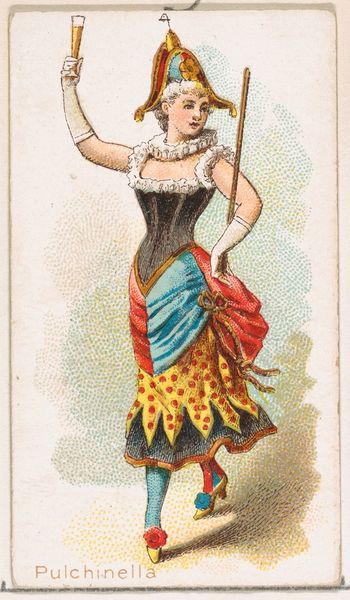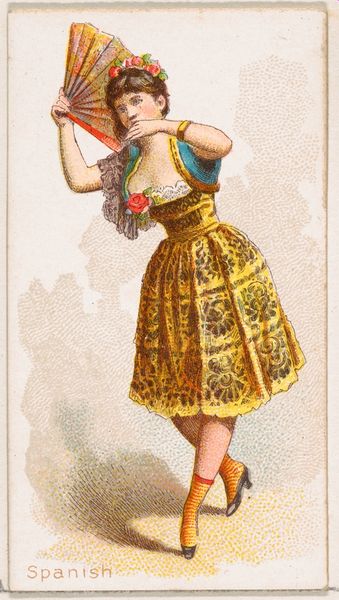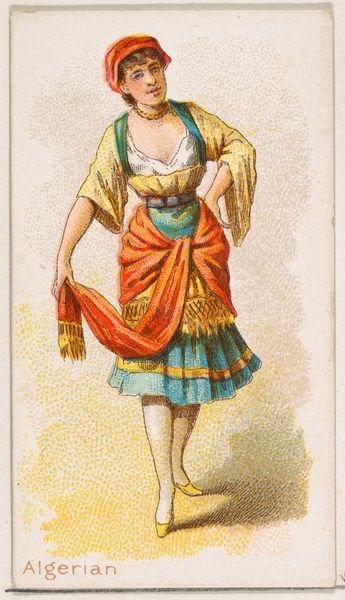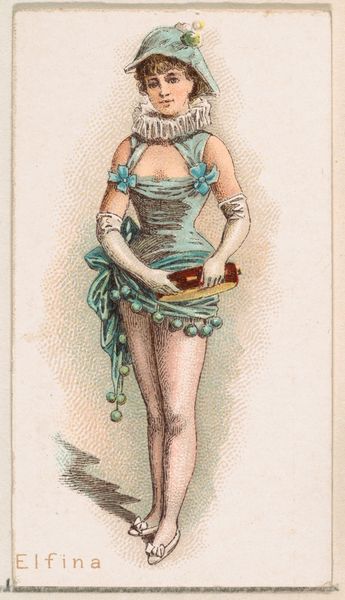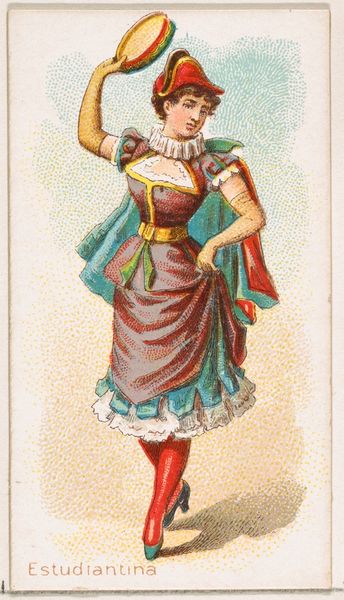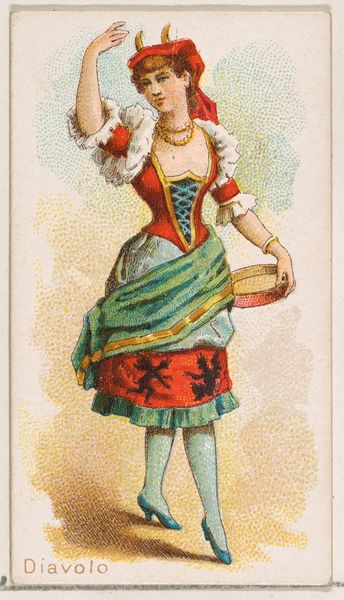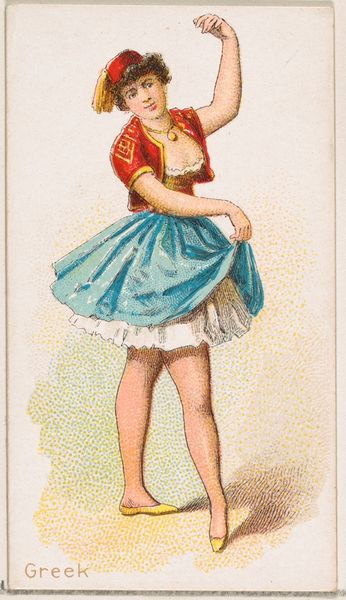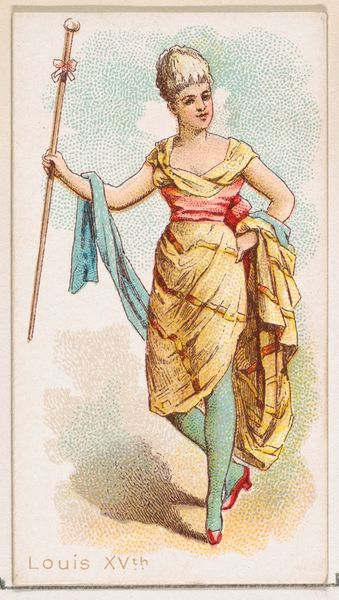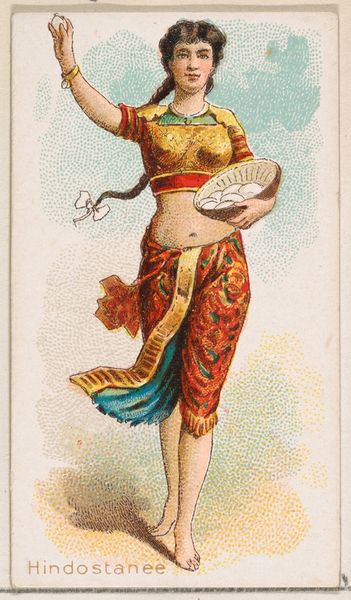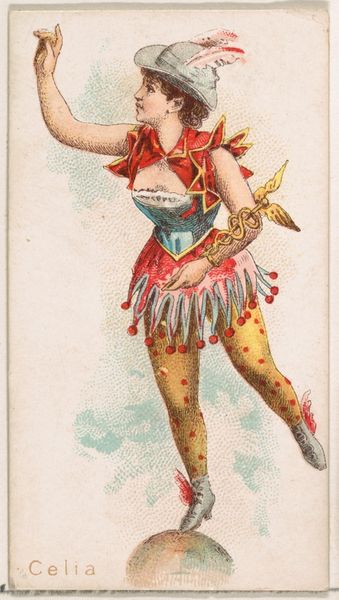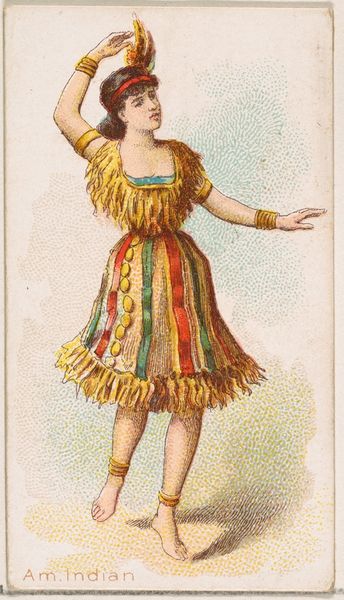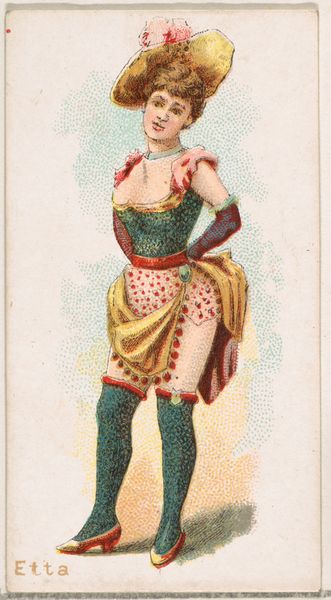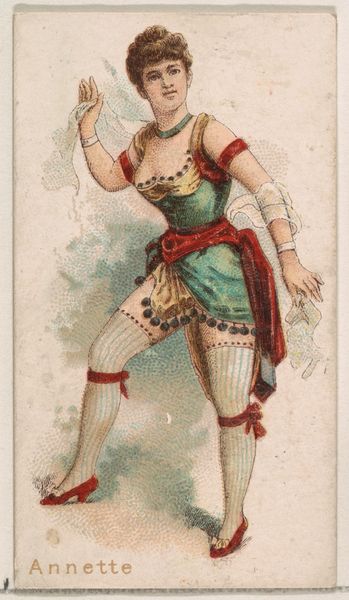
Postillion Dancer, from the Dancing Women series (N186) issued by Wm. S. Kimball & Co. 1889
0:00
0:00
drawing, coloured-pencil, print
#
portrait
#
drawing
#
art-nouveau
#
coloured-pencil
# print
#
caricature
#
caricature
#
coloured pencil
#
watercolor
Dimensions: Sheet: 2 11/16 × 1 7/16 in. (6.9 × 3.7 cm)
Copyright: Public Domain
Curator: I find this chromolithograph strangely captivating. The "Postillion Dancer," part of the "Dancing Women" series from 1889 by Wm. S. Kimball & Co., displays a performer with rather exaggerated features. What strikes you initially? Editor: The colour palette! The juxtaposition of turquoise and ochre creates such a striking yet strange tension across the print's surface. It is rather playful and quite vivid; although I sense it attempts a certain formality through a traditional female portrait presentation, the caricature shines. Curator: Indeed. These cards were, after all, essentially trade cards— marketing ephemera handed out with cigarettes. The means of production involved lithography, making such coloured imagery accessible and easily distributed to the public. Editor: Consider the use of colour pencils within a print such as this: that medium offers unique opportunities for shading and texturing of form. Note also, there are clear delineations in the outlining to separate and further exaggerate her individual garments as structural entities within her costume. Curator: True. And she isn’t simply an artwork either but a commodity, intertwined with Kimball & Co.'s labor and the consumption habits of the time. Think about it—cheap tobacco and images trading on popular conceptions of "feminine allure." Editor: Her specific garb and pose draw focus to what this performer represents in the context of dance at the time. The subject’s uniform is emphasized— the fabric, embellishments, and cuts as forms create dynamic movement. Her lifted arms draws the viewer’s eye from her feet, right up her form, creating circular movement in line with the whip she holds up high. Curator: The distribution networks ensured that the image would have circulated in society far more broadly than fine art prints could at the time. This recontextualises "high art" and dance as consumer culture. Editor: So, beyond its vibrant chromatic language, the linear gestures and figure of the 'dancer' offer compelling insight into design and commercial aesthetic within chromolithography as a means to translate performance into accessible design language. Curator: Precisely, It’s a stark reminder of art and commodity intertwined in a particular historical moment. Editor: I see the subjecthood beyond simple design, but agree with it as historical artefact to reveal structural frameworks behind commodity accessibility.
Comments
No comments
Be the first to comment and join the conversation on the ultimate creative platform.
